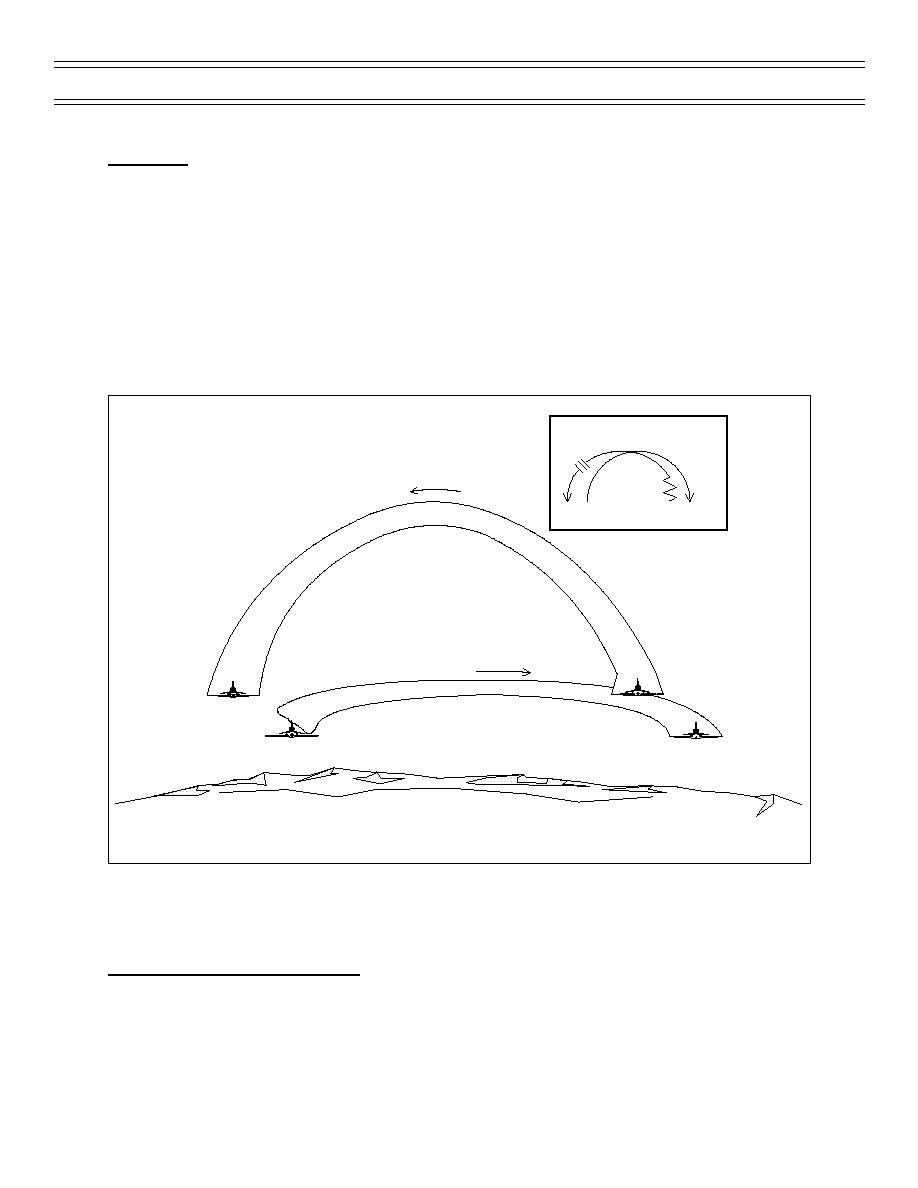
Tactical Formation
Flight Procedures
Cross Turn
The lead initiates the turn by calling, “[Flight’s call sign], cross turn; [lead’s call sign] high/low.” (In the
CNATRA scenario the lead usually goes low.) The wingman acknowledges, “[Call sign, high/low].” The
high man immediately goes to MRT and turns in the low man’s direction at 17 units (Figure 12). The pilot
going low goes to MRT and executes a 17-unit AOA, at 300 KIAS, and a 70-degree AOB turn in the high
man’s direction with the nose tracking on or slightly below the horizon. After 90 degrees of turn, he checks
the high man’s six and calls, “Six clear.” As the high man approaches 90 degrees of turn with
approximately 1000 feet of vertical separation, he checks the low man’s six and calls, “Six clear.” After the
cross, the wingman pulls beyond the new reciprocal heading, taking a 10-30 degree cut into the lead to
arrive back in combat spread at 300 KIAS. Aircraft separation is achieved by the 1000 feet of stepup
maintained by the wingman.
Wingman
Lead
Figure 12: CROSS TURN
MANEUVERING TURNS
The three types of maneuvering turns—engaging, hard, and break—are executed during engagements
with the enemy.
Engaging Turn (Energy-Sustaining)
Executed at MRT, 14 units AOA, and slightly nose-low, the engaging turn allows the pilot to maintain his
energy package while maneuvering for an engagement. Engaging turns employ an efficient turn rate and
radius and may include trading altitude for airspeed. Engaging turns are employed when the pilot detects
the bogey outside the bogey’s weapons range.
(4-03) Original
Page 17


 Previous Page
Previous Page
